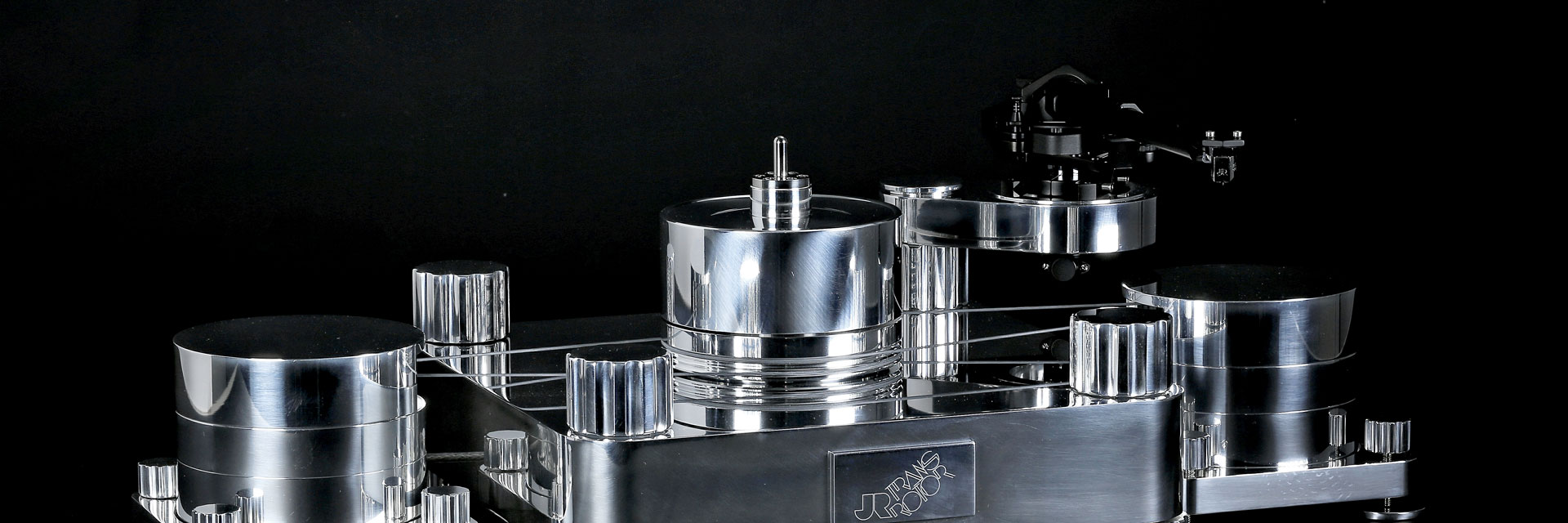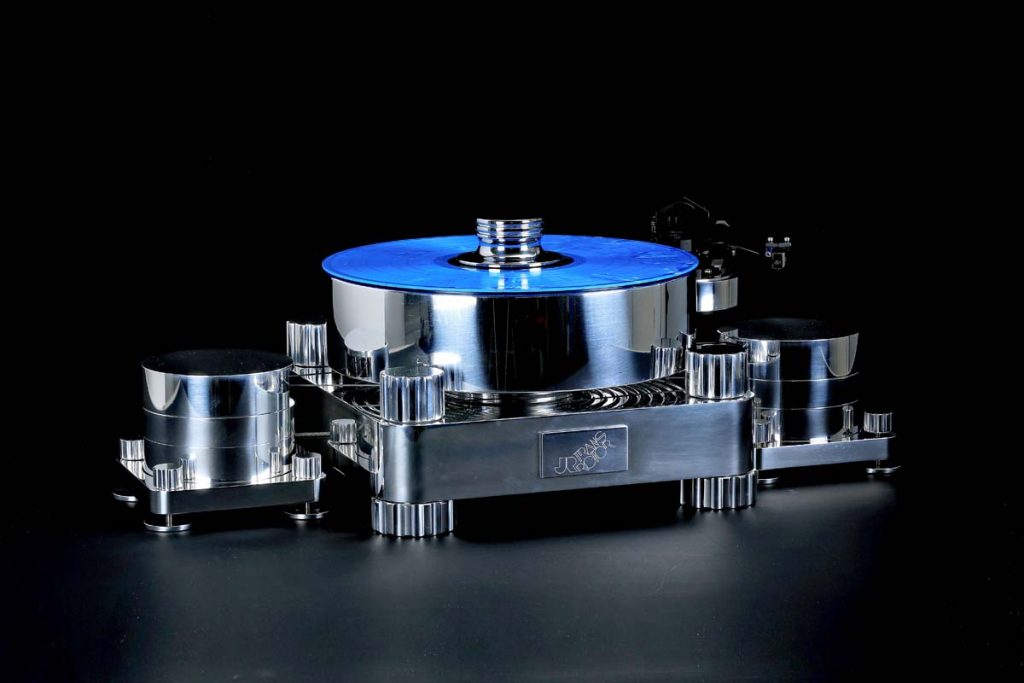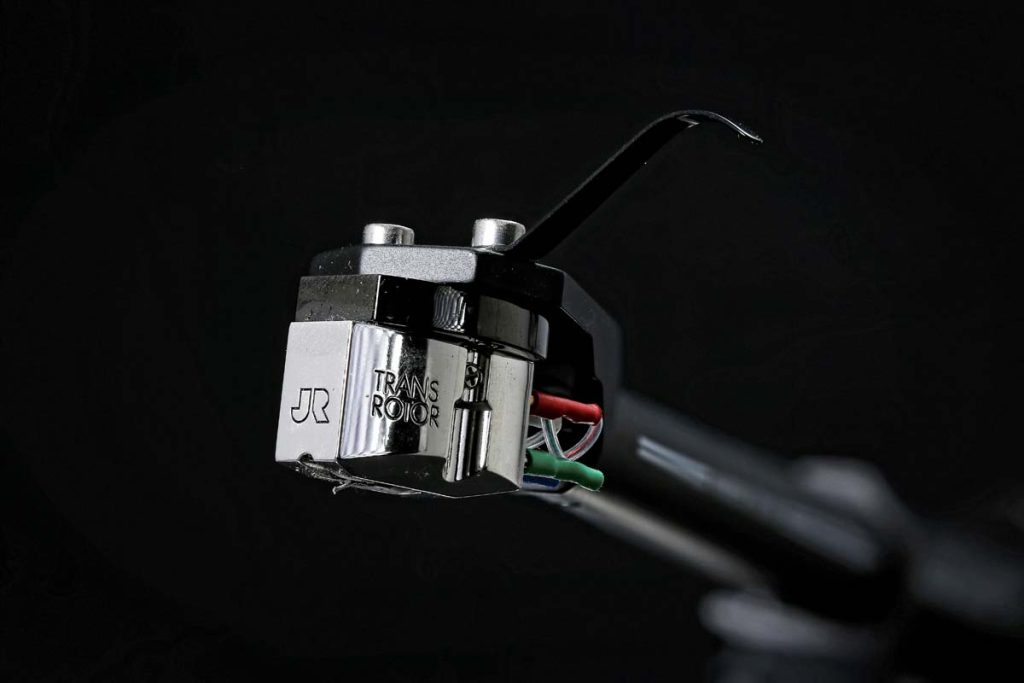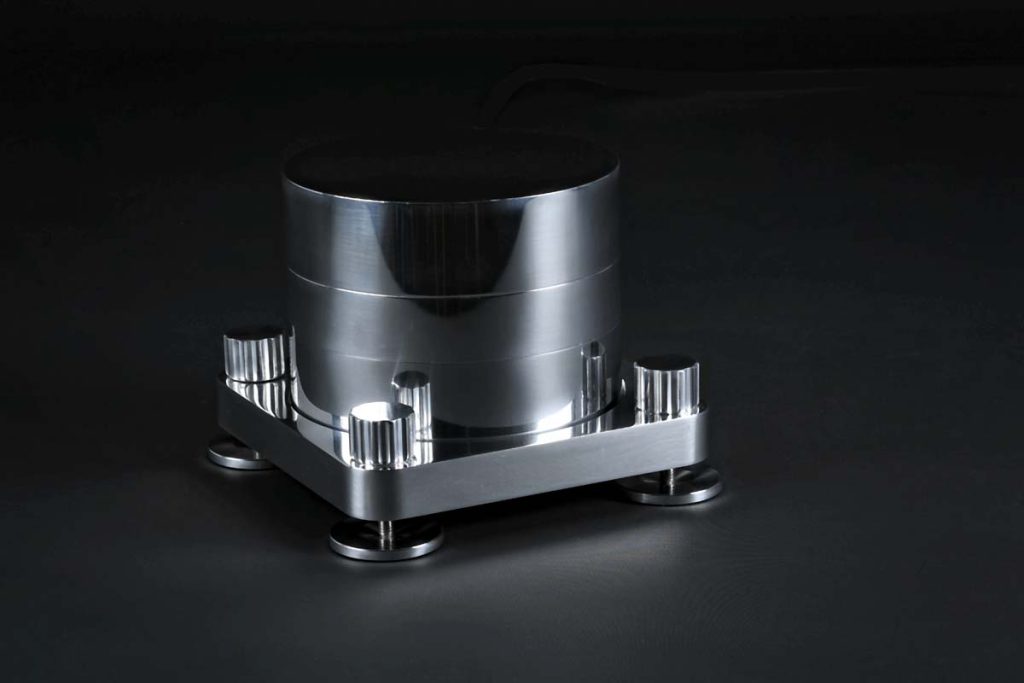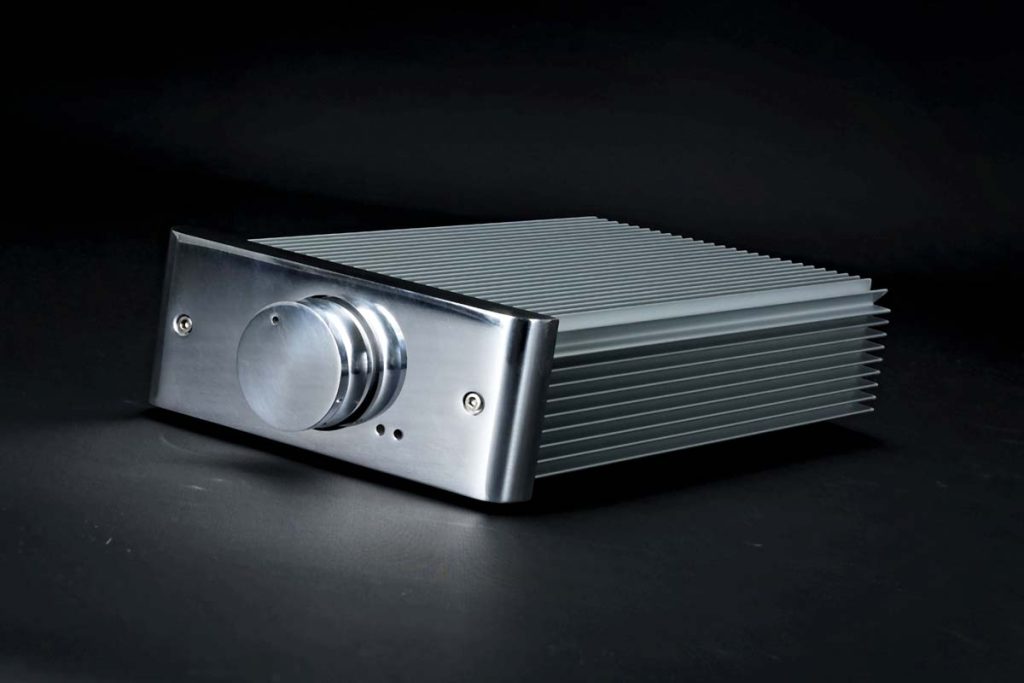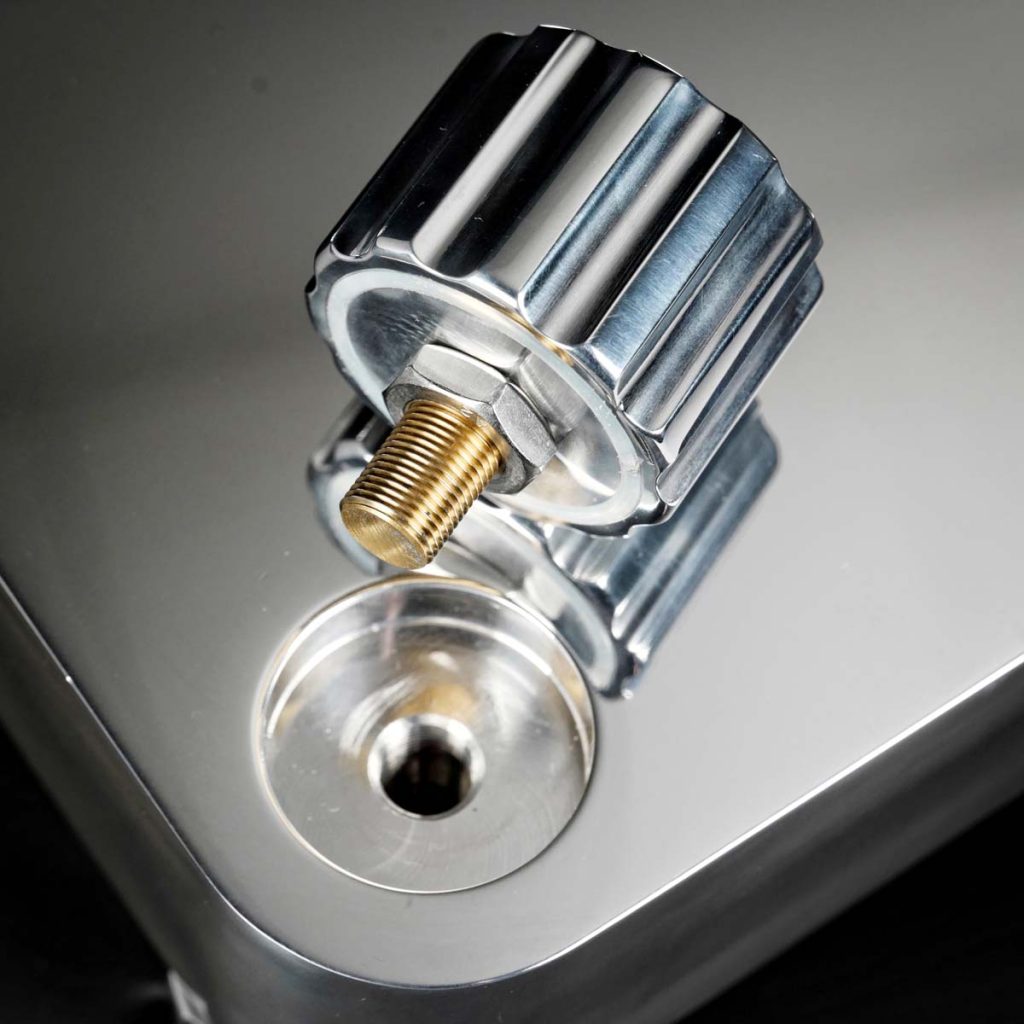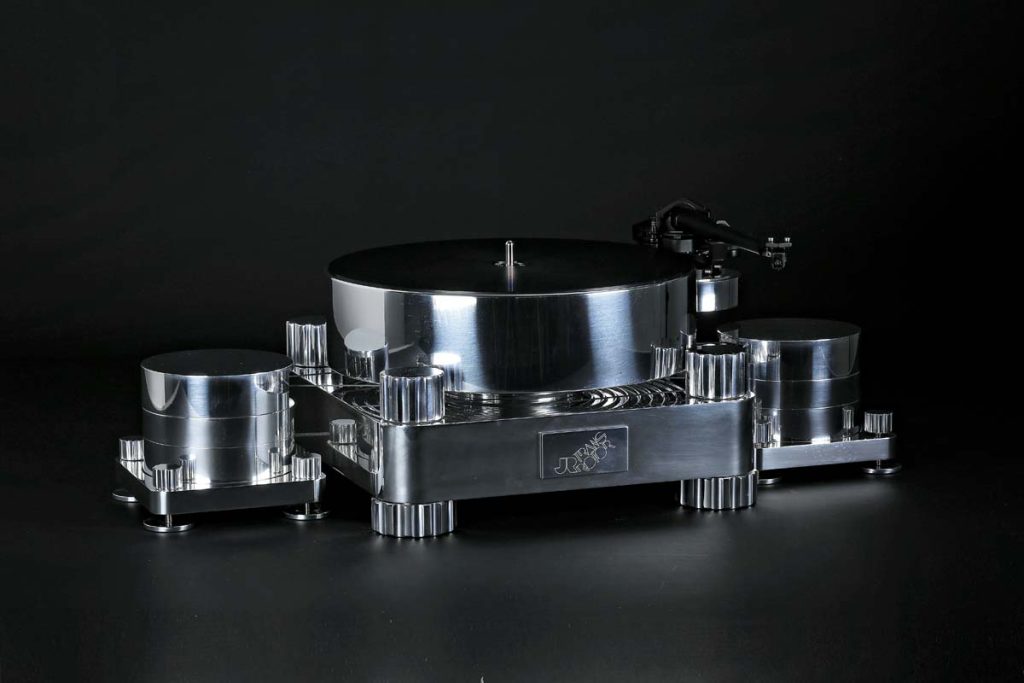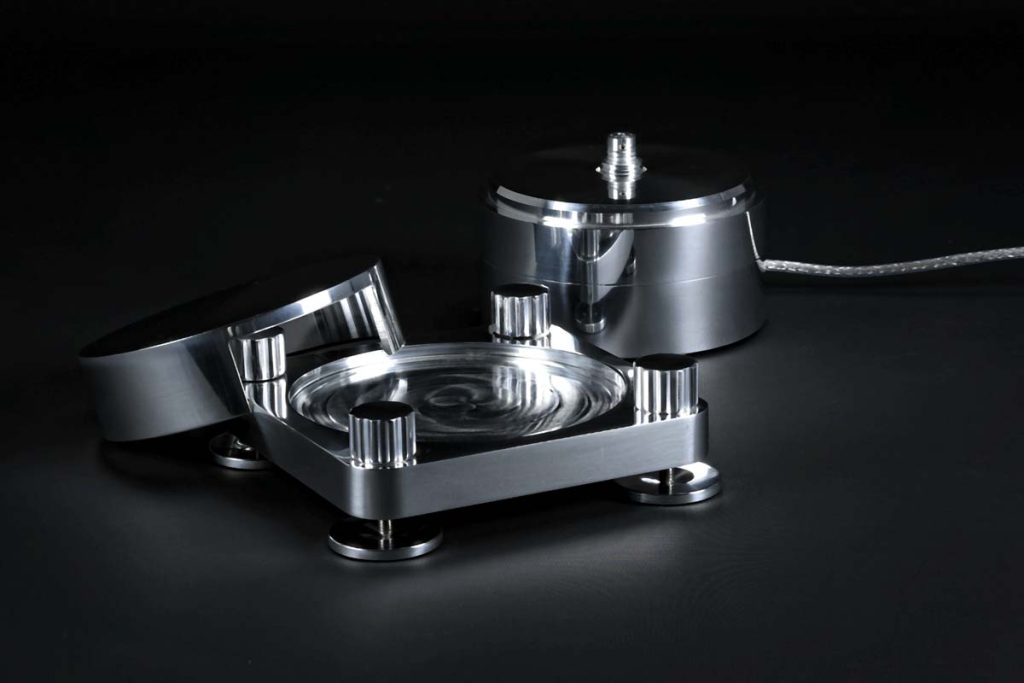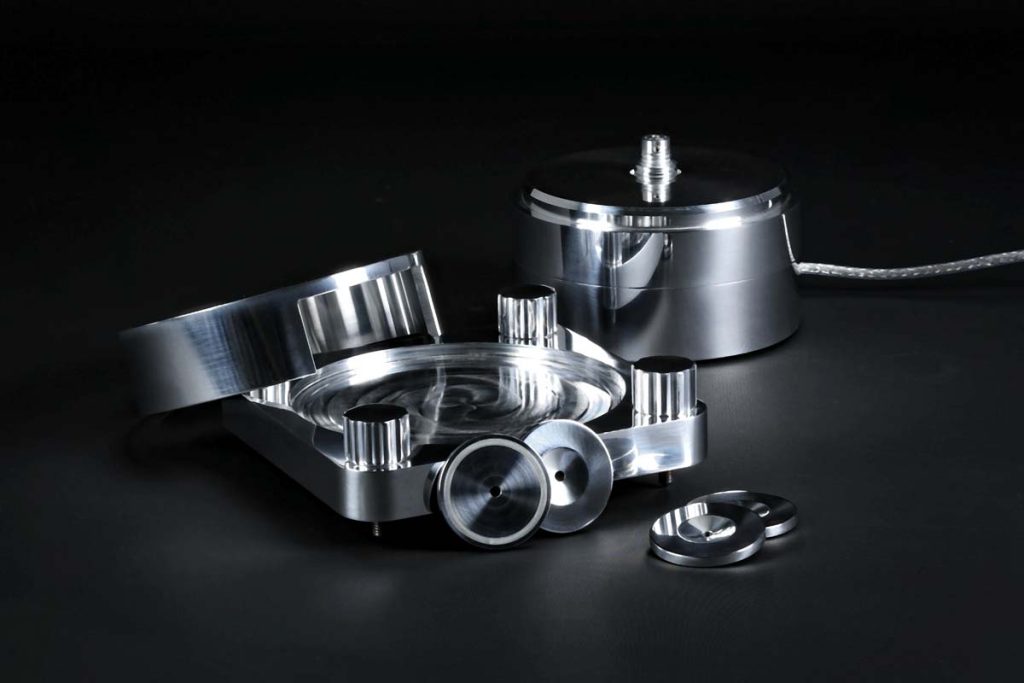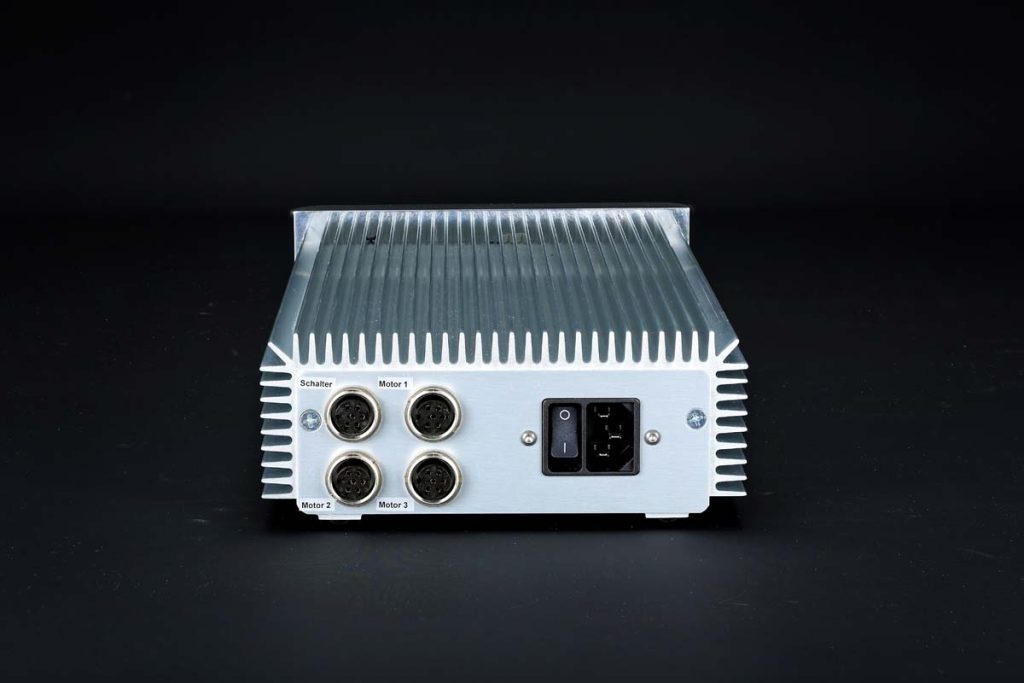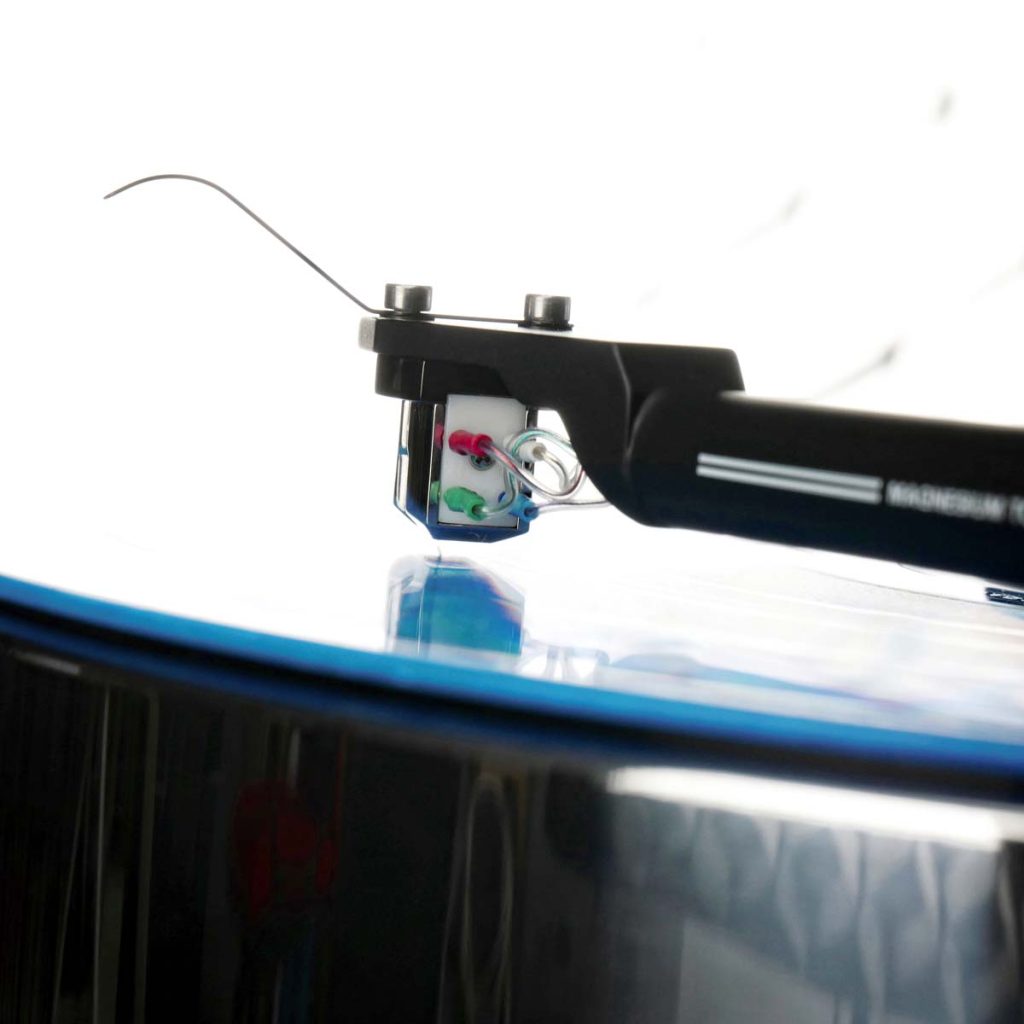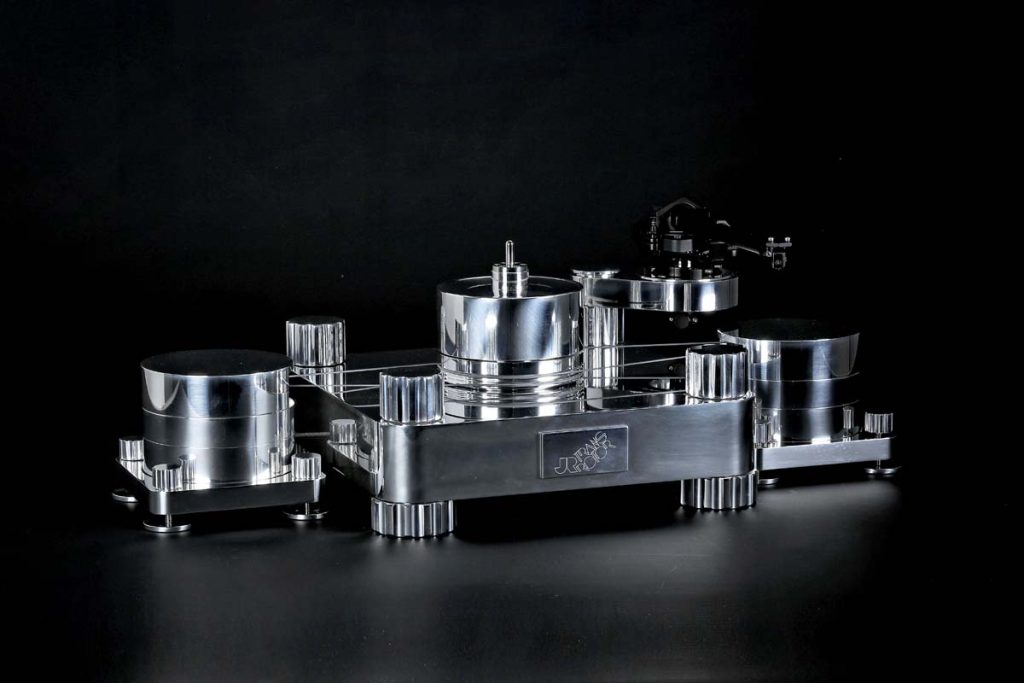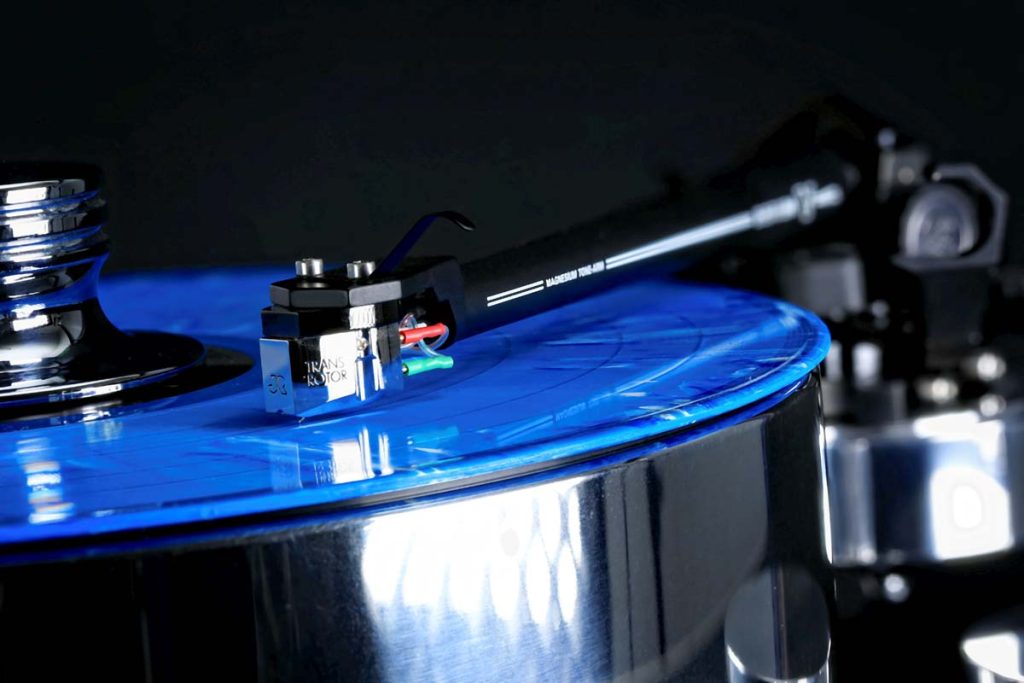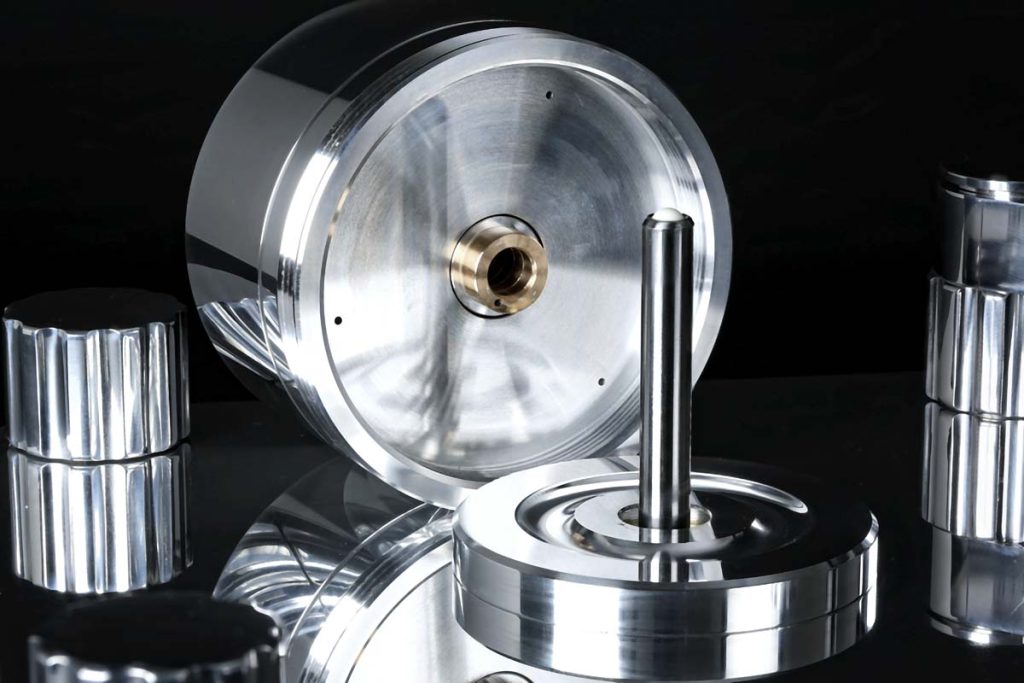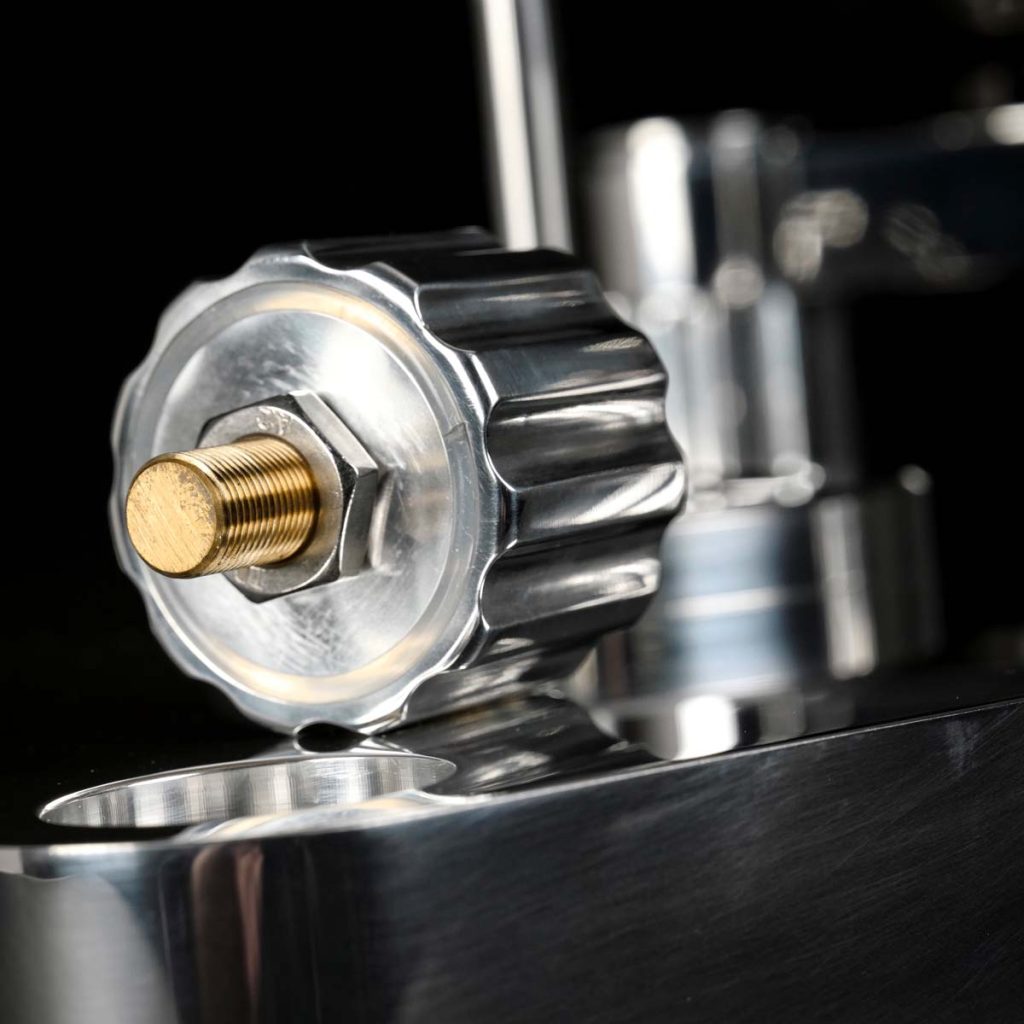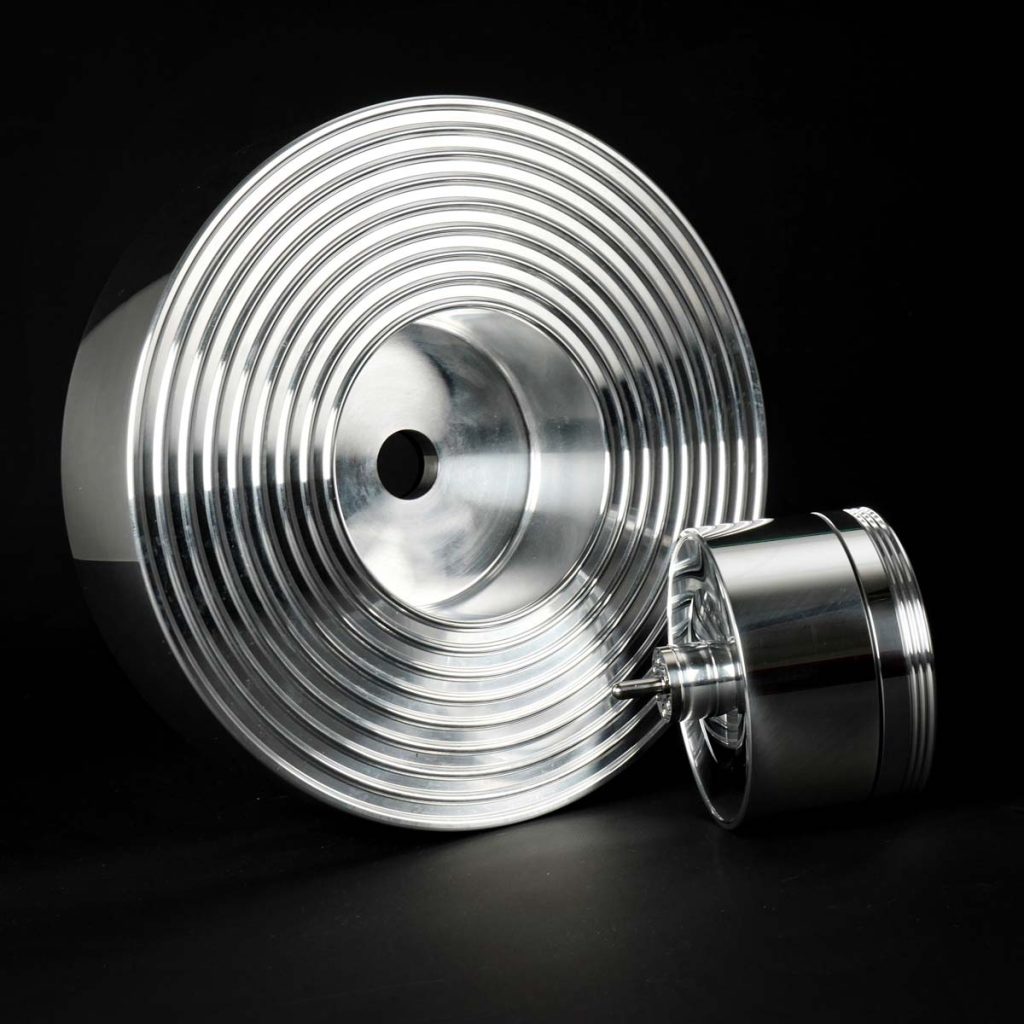Disappearing Act
The new Transrotor Massimo is sure to catch your eye. But your ear – that’s another story. And I do mean that in a good way.
“Do not throw away!” is written on the larger of the two cartons in which the Transrotor Massimo arrives. My scales tell me this carton weighs a hefty 35 kilograms. I’d like to see someone try to throw it away!
Transrotor doesn’t leave anything to chance, though, I learn as soon I’ve opened the cartons: I’ve never seen a turntable so lovingly packaged in so many layers as if it needs to be earthquake proof. Just carefully unpacking all the individual components that will at some point come together to comprise one complete Massimo takes a good half an hour.
Manual setup
Setting up the Massimo, which in terms of its shape and design clearly mirrors the Japanese cult Micro Seiki RX-1500 turntable, is quick and easy and all done by hand. The square base is placed on a flat mounting surface, which, as with all other large Transrotor drives of the past, can never weigh enough. It would be great to listen to this turntable on the TT-100 from LignoLab with its air bearings. Highly recommended by Cai Brockmann, who has affectionately dubbed the 100-kilogram device table the “tiger table” because of its striped design, the Massimo would surely sound even better on it than on my various constructions.
Anyway, after a few minutes, said drive base is level; that is, perfectly balanced: You just loosen the top solid lock nuts, adjust the height with the knurled screws under the base, and tighten on the top again — all done. It’s quick and effortless, and you don’t need any tools at all. There are some nice hidden details, too: Here, metal never touches metal — thin silicone layers in-between always prevent any surface damage from occurring if a heavy hand overtightens of the screws. And that would be such a shame should you take a closer look at the surface of this chassis to appreciate the impeccable, refined workmanship that’s gone into it. It takes a specially hired and trained metal cutter and polisher two full days to achieve the perfect finish for this base.
Once the two motors on the left and right of the base have been put in place and connected to the power supply and the belts have been fitted, the turntable can be set up, which, compared to the 60-millimeter-thick version on my Transrotor Apollon TMD, has gained a few pounds. A wave pattern has been turned into the underside that, together with a plastic insert on the top, is designed to prevent the solid aluminum component from ringing and vibrating in any way. Over time, Transrotor had obviously also changed the belts. The current model consists of a rubber compound with an even smoother surface that should age even more slowly than its predecessor.
The alignment of the tonearm and system suffered a little during transport, but everything is back on track after just five minutes of tinkering. And after a total of just 12 minutes, the Massimo is all set up and ready to go.
Steady as a rock
To start, the drive operates in the supplied configuration with the SME V tonearm and Transrotor Tamino MC system on the Whest THREE phono preamplifier, Lavardin IT, and Diapason Adamantes 25th. After just a few seconds listening to the album From The Stairwell by the Kilimanjaro Darkjazz Ensemble, a few things become clear: first, the razor-sharp spatial reproduction. Individual sound events are unshakably and clearly outlined in the room, regardless of what’s going on around. Even with such sharp low-frequency eruptions, the high-frequency pitch is still perfectly sculptured in the room. Only a handful of drives manage to achieve that as a matter of course and with such composure. The background also appears darker and stiller than with other turntables; and even the Apollon TMD, which has three motors and is in no way bad at all in this regard, could take a page out of the Massimo’s book. This sound characteristic is particularly helpful when it comes to large orchestral scores: You can listen your way through more easily with the Massimo and appreciate the size of the individual registers of the string section better. In some recordings of Gustav Mahler’s symphonies I now experience less “turmoil,” more order and clarity, as I do, for example, with master tapes on my Telefunken M15. At particularly loud points, which can be real acid tests for analog equipment, the Massimo demonstrates real class by, once again, simply stepping aside.
Servant and disc spinner
The more I think about, the more I believe I’ve found a fitting comparison: The fundamental nature of the sound produced by the Transrotor Massimo is like that of a good tape machine. The drive demonstrates the same compelling authority that asserts things have to sound exactly this way. It brings every piece of music into the room in absolute sharp relief and demonstrates practically no masking effects, which, as a result, leaves the sound to take care of itself in the best sense. With me, this always results is a pleasantly immersive listening experience; with the Transrotor Massimo, the listening phases are longer than usual with such “work.”
With decent string quartet recordings that demand less of the drive in terms of dynamics, this setup creates a wonderfully defined room, which — depending on the recording — is either a manageable size or huge, in which the musicians are placed. As with the large orchestral pieces, the clarity and “transparency” of the reproduction are delightful. As if a good mixing engineer had adjusted the individual grooves of the recording once more, the different voices simply get in each other’s way less than with most other turntables.
Pop and jazz also come across as clear and “genuine,” whereas with the Massimo you shouldn’t expect any of the typical flirtatiousness that you get with so many other drives. Nothing surges ahead here, even the band doesn’t approach the listener spatially — everything stays very clearly and precisely in the room. Everyone needs to decide for him- or herself whether reading out the information in the grooves without adding any annotations along these lines is “dirty, sweaty, and fun” enough for them personally. The Transrotor holds back here and comes across as an all-rounder that treats everything and everyone equally well.
System questions
The cartridge contained in this set is the recently presented Transrotor Tamino, which is clearly an analog gem for a correspondingly high price. When replaced with an Ortofon Vienna, the delimitation of the individual sound events loses some contour. The Vienna paints with a softer, broader brush. And in fact even paints over some details that wouldn’t have evaded the Tamino. Overall, the Vienna plays more graciously and rounded and provides fewer details that could deviate from the musical line.
The Tamino is quickly adjusted in my own SME V. My first impression of a rather “lean” performance is put into perspective after just a few records. The system, manufactured in cooperation with MY Sonic Lab, simply refrains from any exaggeration in the fundamental tone or upper bass; it does, however, really let things fly in the lowest registers. The very open high-frequency range may be responsible for my earlier hasty misjudgment. One very fascinating aspect is how the Tamino traces the settling of the highest frequencies in the room depth — I’ve rarely heard such clarity like this before! (Note CB: That’s why I think Transrotor’s top MC system qualifies for a separate review in a future FIDELITY issue.)
Audiophile modular system
What does the second drive motor actually add? It’s kind of exciting that you can actually hear the system switch from one motor to two motors, although the actual platter uses magnets to rather “weakly” connect to and maintain mechanic separation from the subplatter, which houses the belt(s). This TMD (Transrotor Magnetic Drive) bearing is also used in some of the company’s other models; with the Apollon we were able to ascertain similar improvements thanks to the twin drive. Nevertheless, the Massimo plays with solid stability and clarity with “just” one motor. With the second motor, however, the matter-of-factness increases, impulses seem a tad more direct, and the room seems even more consolidated. In essence, it boils down to slight differences and enhancements. In direct comparison, these differences are, of course, identifiable; however without any direct comparison, I would not trust myself to really say whether one or two motors were driving the turntable.
Incidentally, a good chunk of the composure and stability comes down to the extremely solid and low-resonance platter. This is easy to spot because practically everything fits with everything else in the Transrotor modular system, and as a result even my Apollon can be equipped with this part. In fact, equipped and readjusted with the Massimo’s thicker platter, the Apollon also plays a good deal “darker” and more serenely than with the (already “bulky”) series standard version. With sparsely miked vinyls, rooms open toward the rear, and the whole reproduction shifts a little toward the back wall and approaches the listener less. After quickly reconnecting to the Apollon, the new power supply also indicates what’s happened: The sound profile now has more composure and definition.
After all this cross-experimenting, however, everything is nicely restored again, and the Transrotor Massimo plays as ordered and delivered. Since my review is now finished apart from a few closing words, I can escape during the rare free moments of this, as always stressful, holiday time and enjoy some music. That’s because the complete set of Massimo, SME V, and Tamino completely and thoroughly plays all the music entrusted to it without adding any annotations of its own as only a handful of other turntables do.
As striking, shiny, and big as a Transrotor may sometimes be, at least the Massimo almost does a disappearing act in terms of sound and, as I already said, I really mean that in a good way.
Accompanying Equipment
Turntable: Transrotor Apollon | Tonearm: SME V | Cartridge: Ortofon Cadenza Black, Transrotor Figaro | Phono pre-amplifier: ifi Micro iPhono | CD players: Mark Levinson 390S, some computers und music players | Preamplifier/DAC: CanEVER ZeroUno plus | Integrated amplifiers: Lavardin IT, T+A PA 3100 HV | Loudspeakers: Diapason Adamantes 25th, Quadral Aurum Montan 9, Spendor S3/5SE
Turntable
Transrotor Massimo
Functional principle: Belt-driven mass-loaded drive | Special features: Up to four arm bases mountable for all tonearm sockets and lengths, optional one or two motors, optional platter upgrade for guiding a stabilizing ring | Finish: high-gloss polished aluminum | Warranty period: two years | Dimensions (W/H/D): From 55/22/33 cm | Weight: from about 40 kg | Price: from: €8,900
Included in the test set:
- Transrotor Tamino MC system | Price: €12,500
- SME V tonearm | Price: From €4,560
Räke HiFi/Vertrieb GmbH
Irlenfelder Weg 43
51467 Bergisch Gladbach
Germany
Phone +49 2202 31046

